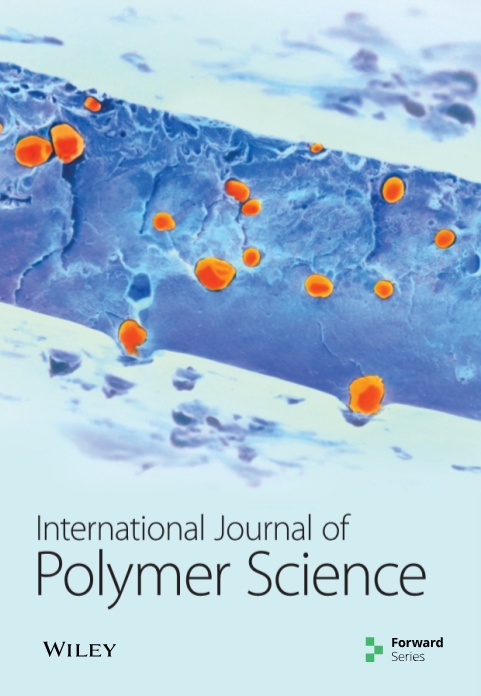Physical and Biological Characterizations of Injectable Thermosensitive Poly(N-Isopropylacrylamide)-Collagen I Hydrogels Intended for Meniscus Repair
IF 4.4
4区 化学
Q2 POLYMER SCIENCE
引用次数: 0
Abstract
There has been an increase in the incidence of meniscus injuries worldwide, as well as growing needs for injectable hydrogels with the potentials to promote in situ meniscal tissue repair. This work developed poly(N-isopropylacrylamide)-collagen I composite hydrogels, with a series of different collagen I contents. The hydrogels were injectable under room temperature and started to solidify around 32°C due to their thermosensitivities, meeting the requirements of the intended applications. The addition of collagen I to the poly(N-isopropylacrylamide) provided physical reinforcement to the hydrogels. Rheological characterizations showed that, under room temperature, the complex viscosity, the storage modulus, and the loss modulus, respectively, increased from Pa•s to Pa•s, from Pa to Pa, and from Pa to Pa, as the collagen I content in the hydrogel increased from 0% to 1%. Cell proliferation tests and high-density culture also revealed that collagen I promoted bioactivity of the hydrogels and induced fibrochondrocyte phenotype of the chondrocytes. The expressions of collagen I protein and collagen I a1 gene in the PNIPAm-0.5Coll group were 3.50-fold and 3.64-fold of those in the PNIPAm group. In contrast, the expressions of collagen II protein and collagen II a1 gene were less prominent (respectively, 2.36-fold and 3.34-fold in the PNIPAm-0.5Coll group compared with the PNIPAm group). This phenotyping was believed to be conducive to the regeneration of meniscal tissues. The findings of this study have provided an important basis for future in vivo studies and clinical applications of this type of composite hydrogels.用于半月板修复的可注射热敏聚(n -异丙基丙烯酰胺)- I型胶原水凝胶的物理和生物学特性
在世界范围内,半月板损伤的发生率有所增加,同时对具有促进原位半月板组织修复潜力的可注射水凝胶的需求也在不断增长。本文研制了具有不同I型胶原含量的聚n -异丙基丙烯酰胺- I型胶原复合水凝胶。水凝胶在室温下可注射,由于其热敏性,在32°C左右开始固化,满足预期应用的要求。在聚n -异丙基丙烯酰胺中加入I型胶原蛋白为水凝胶提供了物理强化。流变学表征表明,在室温下,随着I型胶原含量从0%增加到1%,复合粘度、储存模量和损失模量分别从0.71±0.35 Pa•s增加到110.95±23.22 Pa•s,从3.28±2.02 Pa增加到658.06±128.07 Pa,从3.30±1.01 Pa增加到308.78±56.67 Pa。细胞增殖试验和高密度培养也显示胶原I促进了水凝胶的生物活性,诱导了软骨细胞的纤维软骨细胞表型。PNIPAm-0.5 coll组I型胶原蛋白和I型胶原a1基因的表达分别是PNIPAm组的3.50倍和3.64倍。相比之下,II型胶原蛋白和II型胶原a1基因的表达不那么显著(PNIPAm-0.5 coll组分别是PNIPAm组的2.36倍和3.34倍)。这种表型被认为有利于半月板组织的再生。本研究结果为今后该类型复合水凝胶的体内研究和临床应用提供了重要的基础。
本文章由计算机程序翻译,如有差异,请以英文原文为准。
求助全文
约1分钟内获得全文
求助全文
来源期刊

International Journal of Polymer Science
POLYMER SCIENCE-
CiteScore
6.10
自引率
0.00%
发文量
55
审稿时长
>12 weeks
期刊介绍:
The International Journal of Polymer Science is a peer-reviewed, Open Access journal that publishes original research articles as well as review articles on the chemistry and physics of macromolecules.
 求助内容:
求助内容: 应助结果提醒方式:
应助结果提醒方式:


